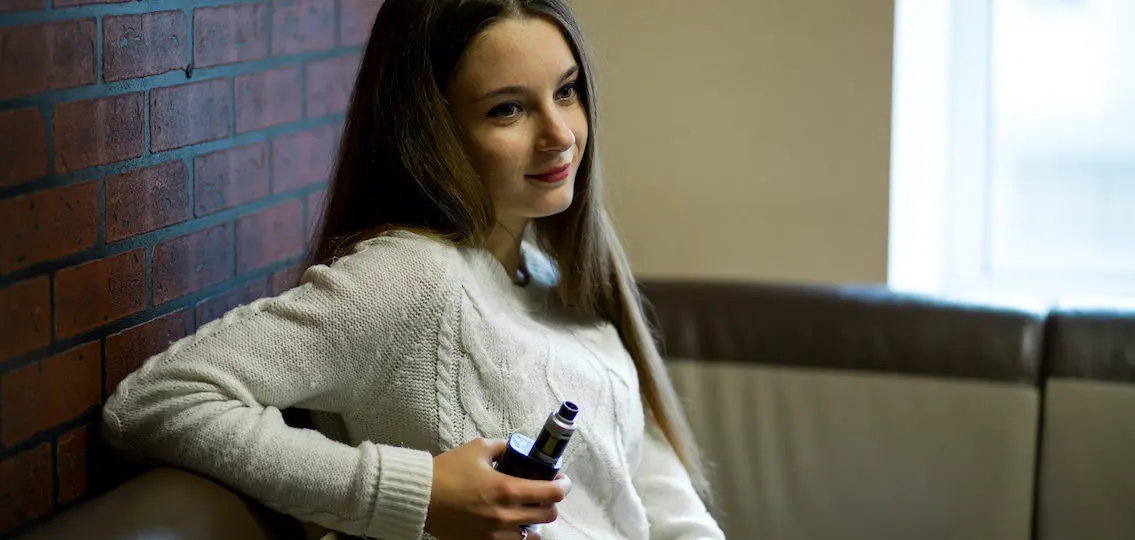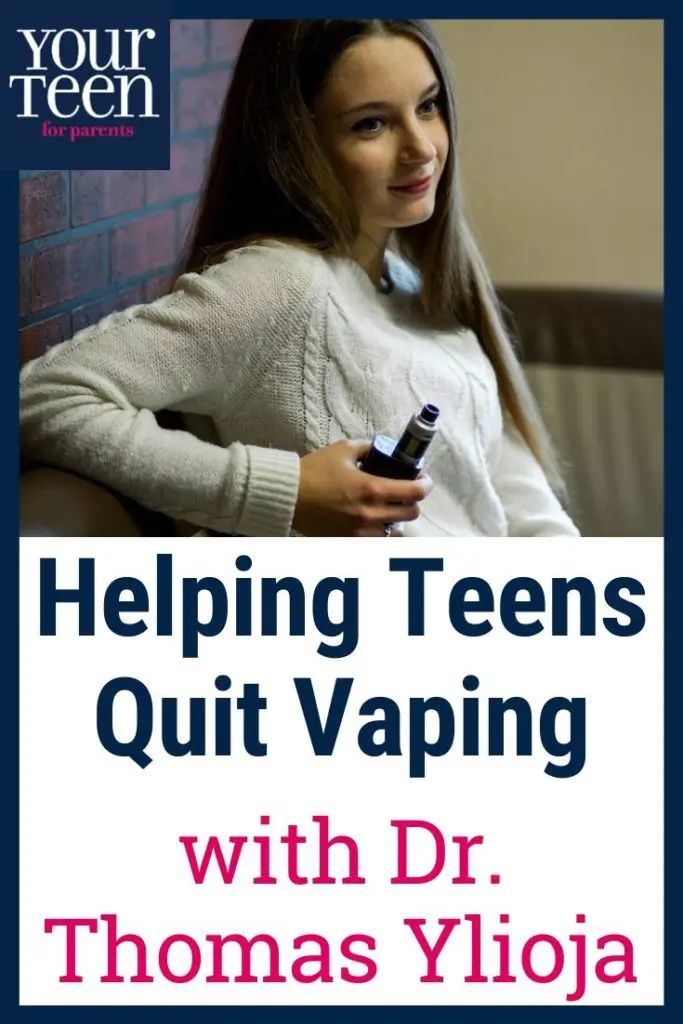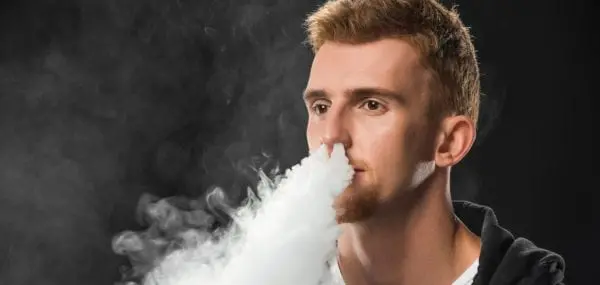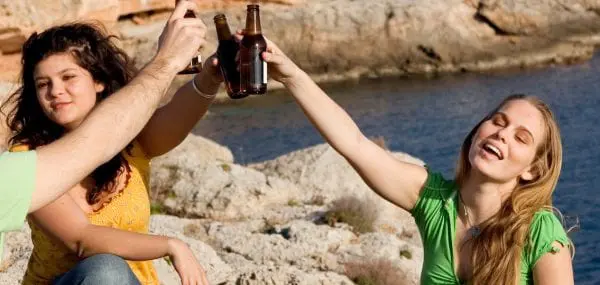Vaping has been on the back burner, but that doesn’t mean it’s gone away. Luckily, My Life My Quit has developed a program that meets teens where they are and supports them in their efforts to be tobacco-free. Dr. Thomas Ylioja, PhD, clinical director of Health Initiatives at National Jewish Health in Denver, CO, explains how it works and what resources are available for teens and their families.
Q: There are parents who are still really struggling with their teenagers and there are teenagers who are using and can’t quit. Can you describe the program My Life My Quit.
Ylioja: My Life My Quit is a dedicated program for teens under the age of 18. Part of what it is a cessation program that really treats nicotine dependence regardless of what source it is. To really help young people, we needed a resource that young people knew was just for them. So, we created the My Life My Quit program to reach them.
National Jewish already operates 18 state QuitLines across the country and so we were really in a position to monitor whether young people were using that program. We were hearing a lot of stories people saying that there were just no resources available, and we went out and talked to young people and said “what about the QuitLine?” What we were hearing from them is the QuitLine is for adults. It’s for people who smoke, and they didn’t see it as the resource for them.
So, we asked them what to do. We discovered they wanted to be able to text with somebody. They wanted to talk to somebody who they knew would listen to them. They didn’t want to talk to their parent necessarily, but they were looking for something confidential and needed to be free. And so, the My Life My Quit program is all of those things: it’s free, it’s confidential, it’s just for teens. It was designed with input from young people who were looking for help.
Q: So, tell me what it looks like? A kid reaches out and then what happens initially, and what happens after that?
Ylioja: If somebody is looking for help, they may see a poster in their school gymnasium or in a hallway. They may be looking for a resource or see a banner ad on YouTube or social media that says go to My Life My Quit.com. Once I get there, there’s lots of really helpful information that they can review about tobacco products, about nicotine, and then they can enroll there as well. If they enroll, they can access our online program. They can also sign up for telephone calls or for text messaging.
The nice thing about our program is that there is a toll-free number. They can call to talk to a coach, or they can text a phone number as well and they can reach one of our coaches. And it’s always live coaching on the text messaging. So, they can always chat with somebody who knows how to work with young people. They’ve been trained specifically on working with young people and they’re also tobacco treatment specialists.
Q: How many states are signed on for this program?
Ylioja: We currently have 20 states around the country that are a part of the program. When somebody’s enrolling online, one of the first questions is which state do you live in. If it’s not in the drop-down list, then we recommend that they try one of the other programs like the smokefree.gov team text messaging program, the truth initiatives text messaging program, or calling a quit line. I think all state quit lines across the country offer some sort of services to people who are under the age of 18.
Q: I just checked and I’m so disappointed because my state is not on that list. Can you give a few tips for parents to help their kid at home?
Ylioja: On our website, we have resources for parents. There are a few things on there about how to talk to your teen about vaping, how to help them with quitting even if they can’t access the My Life My Quit program. There may be resources in terms of getting them connected with their primary care doctor or pediatrician.
Sometimes there are school-based programs or other online programs that they can use. None of them look exactly like our program in terms of having the live coaching available over text messaging, but there are some really good resources out there.
But you know parents definitely need that education about what nicotine is and what these products are. Once you’re knowledgeable about the products and how they work, it’s easier to have conversations with young people about what you might be seeing and hearing and ask their opinions on what they’re seeing and hearing.
Q: So, use your kid as the educator?
Ylioja: Kids are great educators when it comes to it and it’s also a chance to find out if they have myths about them. One of the myths about vaping products among young people is that they’re just water vapor. That they don’t contain nicotine. We know generally, there’s very little water in it and only about 1% of all vaping sales are nicotine free. So, the likelihood that they’re using nicotine in one of these products are very high.
Q: If I have a kid at home, can I be successful without joining one of these programs?
Ylioja: Sure. If you have a good relationship with your teenager and they’re listening to you and you can have a conversation about what quitting looks like. Then absolutely. We hear from parents all the time who are reaching out for support and saying “I’m not quite
Sure how to help my teen.” We sometimes are coaching them on what to say or how to work with their young person to address it. Sometimes it’s as simple as setting up a quit plan.
Identifying what their triggers are, what’s going to make them want to use nicotine and then how to deal with those triggers. How to manage the cravings if currently medications are not approved for anybody under the age of 18 with things like nicotine patches, gum, or lozenges. If somebody is really addicted to nicotine, you may want to talk to your primary care doctor or pediatrician about whether these might be an option for young people.
Q: How can people check out your program?
Ylioja: They can go to MyLifeMyQuit.com. There’s lots of really good information on there. There are good resources for parents, for educators, for health care providers. We launched on July 1st, 2019. We’ve had about 1200 or so young people from across the country enroll in the program. The quit rates look pretty good. They’re definitely comparable to what we see in our general quit line program. So, we’re encouraged that we’re helping young people in the programs like the My Life My Quit program are on the right track in terms of helping young people stop.
Q: Can you share something hopeful for parents who are dealing with this right now?
Ylioja: There have been a lot of changes in the policy environment. This includes things like getting rid of flavors, increasing the age of purchase, cracking down on internet sales. We know these things are effective in stopping young people from having access to nicotine and will help reduce the likelihood that young people are taking up these products in the future.

For somebody who’s already struggling with nicotine addiction, we know from the evidence that effective treatments are out there. People can quit. People do quit. Even when you look at people who currently smoke or have ever smoked, more than half of people who have ever used nicotine products have stopped today. So, there are more people who have stopped using nicotine than currently do. That’s a sign of hope for the future. The more that we can do to prevent young people from taking them up and the more things that we can put in place to help them stop, the better we’ll all be.





